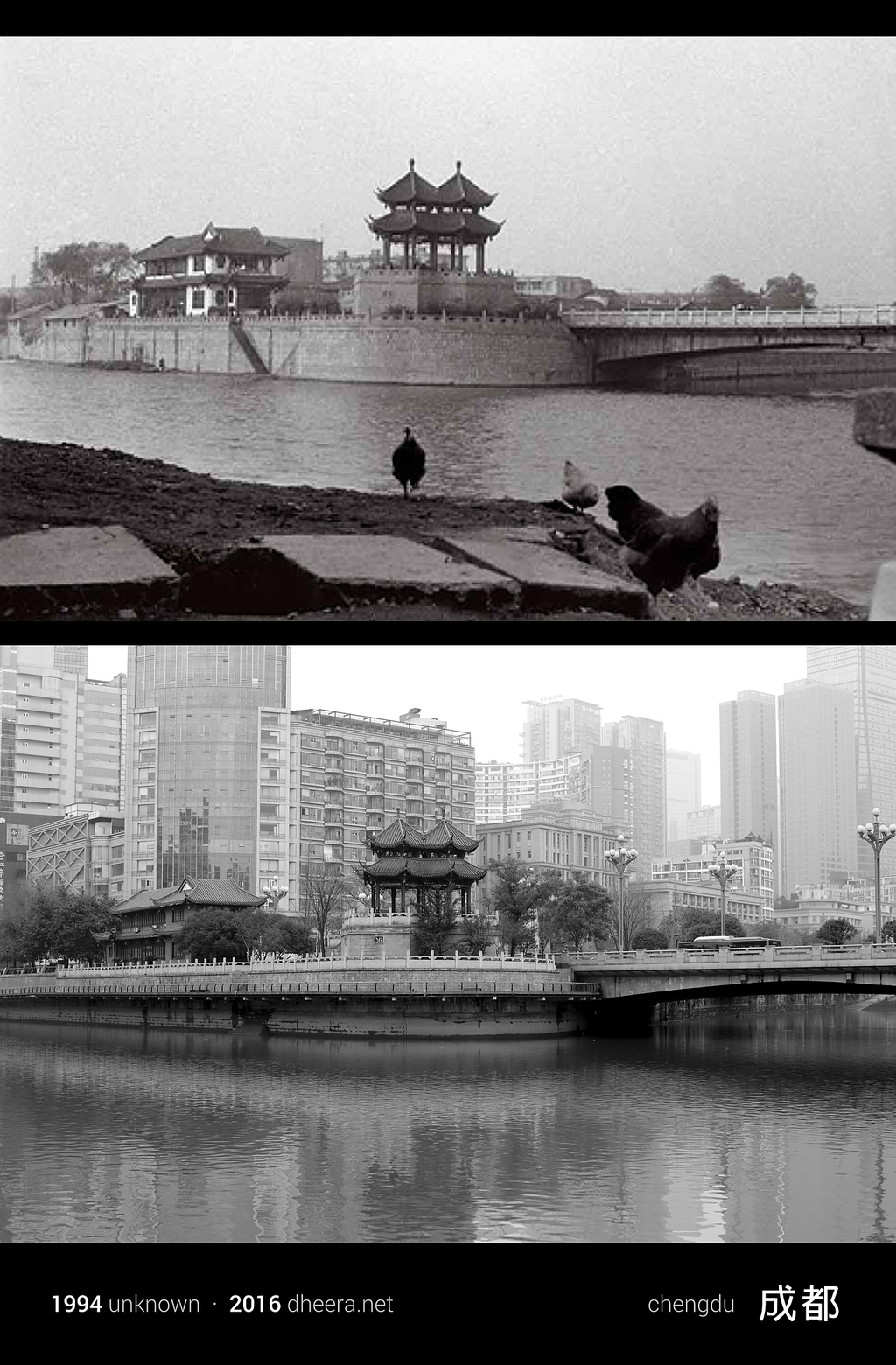OpenSees Cloud
OpenSees AMI
Early Landscape of OpenSees
Original Post - 07 Nov 2020 - Michael H. Scott
In 2016, a photographer recreated historic photos of Chinese cities to highlight the changes the cities have undergone. For example, here is a spot in Chengdu in 1994 and 2016. (I agree, 1994 is not that historic).

Photo from dheera.net licensed under CC BY-SA 4.0
In 1999, when I started working on OpenSees (G3 at the time), the framework was much like the 1994 Chengdu photo. A couple buildings dotted the horizon–Frank had the truss element; Elastic, ElasticPP, and Parallel uniaxial materials; and the elastic beam-column element from his 1997 Ph.D. dissertation.
Remo implemented the force-based beam-column element and the fiber
section representations (patches, layers, etc.) for his Spring 1999 CE
224 class project. Greg implemented the zero length element in December
1999, That same year, I got my feet wet porting Filip’s Concr1 and
Steel1 FORTRAN subroutines to C++. A snapshot of OpenSees in 2001, when
a few more models came in to the picture, is available
here.
From there, construction of the OpenSees framework took off. Like the buildings in the 2016 Chengdu photo, several new models have filled in the spaces around the basic line elements and uniaxial materials of 1999 OpenSees.
I work on problems related to modeling and nonlinear structural analysis. If these problems are relevant to a current professional project, feel free to reach out.